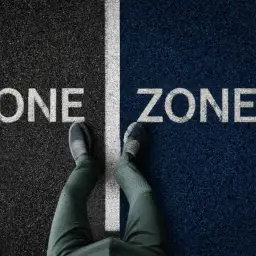Do you often find yourself struggling to push through difficult tasks or challenges? Have you heard about the concepts of grit and perseverance in positive psychology, but aren’t quite sure what the differences are between the two? Understanding these distinctions can help you better develop your own ability to persist in the face of adversity.
Grit and perseverance are both important qualities to have, but they are not interchangeable. In fact, there are six key distinctions between the two that are worth exploring. From the role of passion to mindset and attitude, each of these factors plays a crucial role in determining whether you have grit, perseverance, or both.
By delving deeper into these distinctions, you can gain a better understanding of yourself and your own ability to overcome obstacles in your life.
Key Takeaways
- Grit emphasizes passion and long-term goals, while perseverance emphasizes the ability to persist in the face of immediate challenges.
- Both grit and perseverance require endurance and resilience, with endurance being the ability to persist through difficulties without giving up, and resilience being the ability to bounce back from setbacks quickly.
- Consistency in grit involves sticking to a plan and being disciplined, while adaptability in perseverance involves adjusting one’s approach when faced with obstacles or setbacks.
- Cultivating both passion and perseverance through a holistic approach is important for staying motivated and focused on goals, and traits such as flexibility, persistence, and a growth mindset are key for achieving success.
Defining Grit and Perseverance
So, you’re probably wondering what exactly grit and perseverance mean, right? Well, let me break it down for you.
Grit is defined as the quality of being able to sustain passion and perseverance towards long-term goals, even in the face of obstacles and failures.
Perseverance, on the other hand, refers to the ability to persist in a course of action despite difficulty, obstacles, or discouragement.
The difference between grit and perseverance lies in their definitions and applications in positive psychology. While both concepts are related to the ability to persist in the face of adversity, grit emphasizes the importance of passion and long-term goals, while perseverance emphasizes the ability to persist in the face of immediate challenges.
When discussing grit and perseverance, there are a few ideas that could be explored that are not related to the other subtopics. One is the cultural implications of these concepts. For example, some cultures may place a higher value on perseverance over grit, or vice versa.
Another idea to consider is gender differences in grit and perseverance. Are men more likely to possess grit, while women possess more perseverance? Or do these qualities exist equally across genders? These are important questions to consider when studying these concepts in positive psychology.
The Role of Passion
When it comes to grit and perseverance, passion plays a crucial role in both. You need to have a strong passion for what you’re doing in order to maintain the level of commitment required to persevere through tough times.
Similarly, grit requires a deep sense of passion and purpose that fuels your efforts and keeps you motivated towards your goals. So, if you want to cultivate grit and perseverance in your life, it’s essential to tap into your passions and find projects that truly inspire you.
Passion in Grit
You can feel your heart racing with excitement as you pursue your passions in grit, fueling your determination to achieve your goals. Passion plays a crucial role in grit, as it provides the drive and motivation necessary to persevere through challenges.
Here are three ways passion manifests in grit:
-
Passion fuels persistence: When you’re passionate about something, it’s easier to stay focused and persistent in the face of obstacles. You’re willing to put in the extra effort and time required to achieve your goals because your passion drives you forward.
-
Passion breeds creativity: When you’re passionate about something, you’re more likely to come up with innovative solutions to problems. Your passion inspires you to think outside the box and find new ways to tackle challenges.
-
Passion leads to fulfillment: Pursuing your passions in grit can bring a sense of fulfillment and purpose to your life. When you’re doing something you love, you feel a sense of satisfaction and accomplishment that can help you stay motivated and resilient.
Passion is a key ingredient in grit, providing the energy and inspiration needed to persevere through adversity. Passion fuels persistence, breeds creativity, and leads to fulfillment, making it an essential component of achieving long-term success.
Passion in Perseverance
Passion plays a vital role in persevering through challenges, driving individuals towards their goals with unwavering determination. Finding your passion can be a crucial first step in cultivating perseverance. When you are passionate about something, you are more likely to stick with it through the ups and downs. You are willing to put in the extra effort and time needed to overcome obstacles and setbacks. Passion gives you a sense of purpose and meaning, making it easier to stay motivated and focused on your goals.
But passion alone is not enough to persevere. You also need to develop the resilience and grit necessary to keep going when things get tough. This means learning how to manage stress, bounce back from failures, and stay committed to your goals even when progress is slow. The following table highlights some key differences between passion and perseverance, illustrating how they work together to help you achieve success.
| Passion | Perseverance |
|---|---|
| Emotionally driven | Mentally focused |
| Provides motivation | Builds resilience |
| Helps you find your purpose | Helps you achieve your goals |
| Can fluctuate over time | Can be cultivated and strengthened |
By understanding the relationship between passion and perseverance, you can develop a more holistic approach to achieving your goals. Cultivating both passion and perseverance can help you stay motivated and focused on your goals, even when faced with challenges and setbacks. So take the time to find your passion, and then work to build the mental strength and resilience needed to persevere through any obstacle that comes your way.
Endurance vs. Resilience
Although often used interchangeably, there’s a key difference between endurance and resilience when it comes to building grit and perseverance in positive psychology.
Endurance refers to the ability to persist through difficulties without giving up, while resilience is the ability to bounce back from setbacks and recover quickly. Both are important components of building grit and perseverance, but they serve different purposes.
Here are a few things to keep in mind when considering the importance of endurance vs. resilience:
-
Endurance is important for achieving long-term goals and sticking with a task even when it becomes challenging or tedious.
-
Resilience is important for coping with unexpected setbacks and bouncing back quickly from failure.
-
While it’s possible to have one without the other, having both endurance and resilience can help you become more resilient and persistent in pursuing your goals.
By understanding the difference between endurance and resilience, you can better develop the skills needed to persevere through challenges and setbacks.
Keep in mind that both are important for building grit and achieving success in life.
Consistency vs. Adaptability
When it comes to achieving your goals, consistency in grit and adaptability in perseverance are two key points to consider.
Consistency in grit means sticking to a plan and being disciplined in your efforts. While adaptability in perseverance means being able to adjust your approach when faced with obstacles or setbacks.
By balancing both consistency and adaptability, you can develop a resilient mindset that will help you overcome challenges and achieve success.
Consistency in Grit
You can enhance your grit by consistently showing up and putting in the effort, even when faced with challenges or setbacks. Developing habits that support your goals and aspirations is crucial in building consistency and making progress towards your desired outcomes.
To develop consistency in grit, consider the following tips:
- Set clear goals and break them down into smaller, manageable tasks
- Create a routine that supports your goals and stick to it consistently
- Hold yourself accountable and track your progress regularly
By implementing these practices, you can strengthen your resilience and build the grit necessary to overcome obstacles and achieve your goals. Remember, consistency is key in developing grit, and it takes effort and dedication to cultivate this trait.
Adaptability in Perseverance
Now that you’ve got a good understanding of consistency in grit, let’s shift our focus to adaptability in perseverance.
While grit requires a certain level of consistency in pursuing a long-term goal, perseverance involves the ability to adapt goals and overcome obstacles when faced with unexpected challenges.
Adapting goals is an important aspect of perseverance because it allows us to be flexible and persistent in the face of adversity.
When we encounter setbacks or obstacles, it’s important to reassess our goals and make adjustments where necessary.
This doesn’t necessarily mean giving up on our long-term goals, but rather finding alternative paths to achieve them.
Flexibility and persistence are key traits that help us stay motivated and focused on our goals, even when faced with unexpected challenges.
So, if you want to cultivate perseverance, be prepared to adapt your goals and stay persistent in the face of obstacles.
Mindset and Attitude
With the right mindset and attitude, we can cultivate both grit and perseverance in our daily lives. It all starts with having a growth mindset. Instead of believing that our abilities and talents are set in stone, we should embrace the idea that we can always improve and grow. This mindset allows us to approach challenges with curiosity and a willingness to learn, rather than a fear of failure.
Once we have a growth mindset in place, we can make the necessary attitude adjustments to foster grit and perseverance. Here are three ways to do just that:
-
Focus on the process, not just the outcome. When we become too fixated on achieving a specific goal, we can lose sight of the steps and effort required to get there. By focusing on the process instead, we can appreciate the progress we make along the way and stay motivated to keep going.
-
Embrace failure as a necessary part of growth. Failure is not a sign of weakness, but rather a sign that we’re pushing ourselves to new heights. Instead of giving up after a setback, we should use it as an opportunity to learn and improve.
-
Surround yourself with a supportive community. We’re not meant to go through life alone. Having a supportive network of friends, family, and colleagues can provide us with the encouragement and motivation we need to persevere through tough times.
Application in Daily Life
By incorporating a growth mindset into your daily life, you can embrace challenges as opportunities for growth and surround yourself with a supportive community to foster grit and perseverance. Practical tips for implementing a growth mindset include reframing negative self-talk into positive affirmations, setting achievable goals, and seeking out constructive feedback. By doing so, you can cultivate resilience and perseverance, even in the face of adversity.
Real life examples of individuals who have embraced a growth mindset and applied it to their daily lives include Olympic athletes who train for years, pushing themselves to their physical and mental limits in pursuit of their goals. They often face setbacks and injuries, but use these challenges as opportunities to learn and improve. Similarly, entrepreneurs who start their own businesses face numerous obstacles, but maintain a positive mindset and seek out support from mentors and peers to overcome them. By following in their footsteps and incorporating a growth mindset into your own daily life, you can develop the grit and perseverance needed to achieve your own goals and overcome any obstacles that may come your way.
| Positive Mindset | Negative Mindset | ||
|---|---|---|---|
| Embrace challenges as opportunities for growth | Fear challenges and avoid them | ||
| Set achievable goals and seek constructive feedback | Avoid setting goals and dismiss feedback | ||
| Cultivate resilience and perseverance | Give up easily and lack resilience | ||
| Learn from failures and setbacks | Blame others and give up after failures | ||
| Surround yourself with a supportive community | Isolate yourself and lack support | Ultimately, adopting a growth mindset and taking responsibility for your own growth and development will lead to greater success and fulfillment in life. |
Frequently Asked Questions
What are the potential drawbacks of having too much grit or perseverance?
If you have too much grit or perseverance, it can lead to potential drawbacks that can hinder your progress in achieving your goals. The drawbacks of excessive grit and perseverance include burnout, neglecting other important aspects of your life, and not being able to adjust your goals or strategies when necessary.
Finding balance in pursuit of your goals is important to avoid these drawbacks. It’s important to recognize when you need to take a break or adjust your strategies to avoid burnout.
Additionally, it’s important to not neglect other important aspects of your life, such as relationships or self-care, in pursuit of your goals. Finding a balance between grit and perseverance and self-care is key to achieving long-term success.
Can grit and perseverance be developed, or are they innate traits?
So you’re wondering whether grit and perseverance are innate traits or if they can be developed?
Well, the answer is a bit of both. While some individuals may naturally possess more grit or perseverance due to genetic or environmental factors, research suggests that these qualities can also be nurtured and cultivated through deliberate practice and effort.
Developing grit involves setting challenging goals, maintaining focus and resilience in the face of obstacles, and seeking feedback and guidance to continually improve.
So, while some may have a head start in this area, anyone can enhance their capacity for grit and perseverance with dedication and practice.
How do cultural and societal factors impact the development of grit and perseverance?
Cultural impact and societal influence play a significant role in the development of grit and perseverance. Your cultural background and the society you live in can shape your beliefs and values, which affect your motivation and determination to achieve your goals.
For instance, in some cultures, there’s an emphasis on collectivism, where the group’s success is more important than individual achievements. In such societies, people may prioritize teamwork and collaboration over individual efforts, which can impact their development of grit and perseverance.
On the other hand, in societies that emphasize individualism, people may focus more on personal goals, which may require more grit and perseverance to achieve. Therefore, cultural and societal factors can impact the development of grit and perseverance, and it’s important to recognize these influences when trying to cultivate these traits.
Is there a correlation between grit and perseverance and success in different areas of life, such as career, relationships, and personal growth?
Have you ever wondered if there’s a connection between grit and perseverance and success in different areas of life? Well, studies show that there is indeed a correlation.
Grit vs resilience and the impact on well-being have been researched extensively, and it’s been found that having a combination of both qualities leads to a more fulfilling life.
In terms of education and academic achievement, grit and perseverance have been shown to be critical factors in achieving success.
While grit is more about long-term goals and passion, perseverance is about pushing through challenges in the moment.
By developing both qualities, you can increase your chances of success in various areas of life.
How can individuals strike a balance between perseverance and knowing when to let go of a goal or aspiration?
Balancing persistence and knowing when to let go gracefully is a delicate dance that requires self-awareness and flexibility.
It’s important to recognize when a goal or aspiration is no longer serving you, and to be open to adjusting or redirecting your efforts.
At the same time, perseverance can be a powerful tool in achieving success, as long as you’re willing to adapt and pivot when necessary.
The key is to stay focused on your values and purpose, while also being willing to reassess and reevaluate your path.
It’s okay to let go of a goal or dream if it no longer feels aligned with who you are or what you want, but it’s also important to stay committed to your growth and development.
Finding balance between these two forces can be challenging, but with practice and self-reflection, it’s possible to strike a healthy and sustainable equilibrium.
Conclusion
So now that you’ve learned about the key differences between grit and perseverance, you may be wondering: which one is more important?
The truth is, both qualities are essential for success in life. Grit helps you maintain your focus and work towards long-term goals, while perseverance helps you bounce back from setbacks and keep going despite obstacles.
To cultivate both grit and perseverance, it’s important to cultivate a growth mindset and maintain a positive attitude. Remember that setbacks and challenges are opportunities for growth, and that every failure brings you closer to success.
By embracing these qualities and applying them in your daily life, you can become a more resilient and determined individual who’s capable of achieving great things.


















































































































